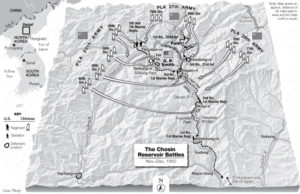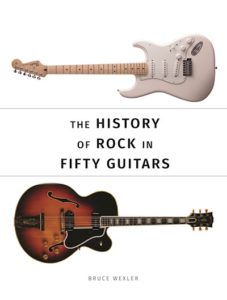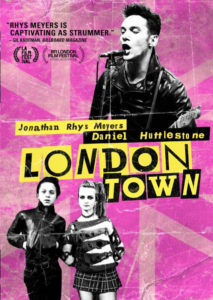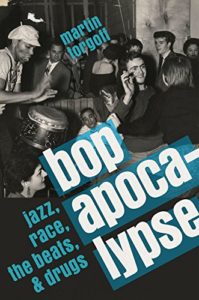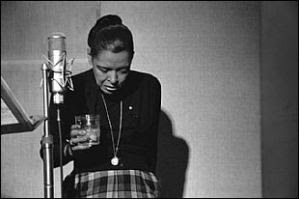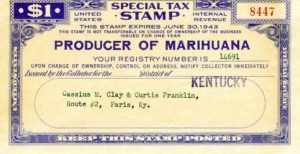Public Media Distribution continues dishing out tasty dishes. And DVDs. Now available: Moveable Feast with Fine Cooking: Season 4.
Nominated for an Emmy and James Beard Award, and winner of both Telly and TASTE Awards, the set is hosted by Pete Evans, Australia’s top celebrity chef. Follow Pete on a culinary journey across America as he teams up with the country’s most innovative chefs to source the finest regional ingredients and create a multi-course feast for friends.
In the two-disc Season 4, learn cooking tips and techniques from talented chefs, including Curtis Stone, Sean Brock, Andrea Reusing and Brian MaLarkay, and how you can interpret their flavorful dishes in your own kitchen. Watch as diners sit down to enjoy these spectacular meals hosted in unique places, from a majestic redwood grove and river oyster farm to a stunning ranch in the foothills of Montana and the deck of the USS Midway. You’ll want a seat at the table!
The episode descriptions are below:
Los Angeles, California–Curtis Stone & Francis Derby
Chefs Curtis Stone of Maude restaurant and Francis Derby of The Cannibal restaurant join host Pete Evans to explore the culinary mecca of Los Angeles. From browsing the Santa Monica Farmers’ Market to Logan’s Gardens, the three collect their ingredients to prepare for an extravagant pig roast. Curtis makes a fresh peach mustard for his fennel-rubbed pig, which is paired with Francis’ spread of mixed charcuterie, raw vegetables and duck rillettes. It’s a picture perfect feast for a beautiful location in Silverlake, California.
Bozeman, Montana–Melissa Harrison & Eduardo Garcia
Big Sky meets lamb in Bozeman, where chefs Melissa Harrison and Eduardo Garcia create dishes with rustic flair. Our host Pete Evans joins the chefs in the beautiful Montana terrain for trout fly-fishing and the three channel their wild side as they forage for natural and fresh ingredients. This Moveable Feast takes Chef Evans to the spectacular Willow Spring Farm in Montana, where Chefs Harrison and Garcia serve a mouthwatering whole roasted lamb on a spit.
Charleston, South Carolina–Mike Lata and Jason Stanhope
Explore the culinary wonders of Charleston as you head toward the shore. Chefs Mike Lata and Jason Stanhope join the team as they venture into the water for shrimp and other seafood delicacies that make for a mouth-watering dinner. With oysters as an appetizer and Lata’s fish stew served with Stanhope’s rice and vegetables dishes, this meal will be one for the books.
San Francisco–David Barzelay and Brandon Jew
Host Pete Evans takes us to Golden Gate Park with fellow chefs David Barzelay of San Francisco’s Lazy Bear and Brandon Jew of Mister Jiu’s. Our team will forage today, first for seaweed off Bodega Bay, then redwood bark for our cocktail. For their meal, they prepare steamed halibut and bone marrow and aged cheddar cheese with crudite. Their cross-cultural meal meets a rustic setting as they eat a beautiful dinner inside a Redwood grove.
Baltimore, Maryland–Duff Goldman & Bryan Voltaggio
Pete takes on blue crab country when he joins chefs Goldman and Voltaggio. After gathering crabs from JM Clayton Seafood Company, the oldest crab-picking house in the U.S., the group visits the small specialty store of Hex Ferments to purchase the best sauerkraut in the area. Pete starts the feast with Thai-style deviled eggs with crab mayo and kraut, while Brian serves a true Maryland blue crab feast and the Ace of Cakes aces it with the classic Smith Island Cake for dessert. Get ready for the crab and cake feast of your dreams.
San Diego, California–Brian MaLarkey & Javier Plascencia
Explore the culinary style of San Diego, where chefs MaLarkey and Plascencia create dishes with Mexican-Cali flair. Our host chef Pete Evans joins the chefs for visits to a Californian coffee roaster and the shores of San Diego to find perfect ingredients. We also embark on a trip to Catalina Offshore, one of the region’s premier seafood purveyors. Chef MaLarkey prepares a fantastic salad with grilled local sardines while Chef Plascencia impresses diners with a fantastic mole.
Davidson, North Carolina–Joe & Katy Kindred
Pete heads to North Carolina to meet with the owners of the famous Kindred restaurant, chef Kindred and his wife Katy. The three visit the award-winning Noda Brewing Company–home of the Hop, Drop ‘n Roll IPA–and the family-run Newtown Farm for organic vegetables. Together, they make a beautiful lakeside feast, featuring classics like a crispy North Carolina oyster and shrimp roll, as well as pasta and clams. And, of course, no southern meal would be complete without a sweet dish like Katy’s strawberry shortcake spin.
Charleston, South Carolina – Sean Brock & Benjamin Dennis
The program returns to Charleston, where chefs Brock and Dennis create some classic local dishes with all the Southern charm. Our host Pete Evans joins the chefs for visits to a South Carolina plantation, which produces some of the finest vegetables and rye in the area. We also embark on a trip to an innovative farm looking to feed and train the people of tomorrow and teach them to grow sustainable foods. Chef Dennis prepares a fantastic short rib and conch stew with classic southern grits, while Chef Brock roasts a pig with heritage greens and vegetables.
Topping, Virginia – Ryan & Travis Vroxton & Chef Dylan Fultineer
Pete welcomes us to Virginia, where we meet skilled oystermen Ryan and Travi, as well as Fultineer. Dylan brings Pete to Sub Rosa, a bakery specializing in traditional breadmaking. Later, Ryan and Travis have the chance to show Pete the secrets to their trade as they head onto the water and harvest one of the tastiest oysters in the world. Together, they design a meal that combines southern barbeque with the sea in the Croxtons’ BBQ Oyster Fest, and Dylan cooks up a special lamb and oyster stew.
Outstanding in the Field–Chef Oliver Ridgeway
Join our host Chef Pete Evans for Moveable Feast’s biggest feast of the season–an outstanding meal in the beautiful fields outside Sacramento, California. Our host visits Outstanding in the Field, a visiting chef-based, farm-to-table dinner experience, with Chef Ridgeway, who works with local farmers to create a delicious, fresh Moveable Feast.
Greenough, Montana–Chef Ben Jones & Rory Schepisi
The program goes to a chuck wagon dinner in Greenough, Montana. Our host chef Pete Evans joins chef Jones, of Paws Up, and grilling master Schepisi, to experience a classic Montana barbecue. Chefs Jones and Schepisi take Evans on a tour of local farms to harvest honey and see how real Montana angus beef is raised. The chefs prepare a delicious meal featuring Montana beef in this quintessential Chuck Wagon dinner. This Moveable Feast even has our host on the move… on horseback!
Durham, North Carolina–Andrea & Brendan Reusing
From rooftop to rain in North Carolina, host Pete Evans is joined by the Lantern restaurant co-founders and siblings Andrea and Brendan to create an amazing local feast. Our team visits the small Chapel Hill Creamery, known for its award-winning cheeses, and the sustainability-driven EcoFarm for its fresh, organic produce. With the ingredients they’ve gathered, they prepare grilled country pork ribs with a rhubarb relish; a warm kale salad with radishes, eggs, and a bacon dressing; and an appetizer of grilled Bibb lettuce with mozzarella and preserved lemon and spring onion dressing.
Washington, D.C.–Mike Isabella & Jennifer Carroll
Go Greek in the U.S. capital with chefs Mike Isabella and Jennifer Carroll. Our host Chef Pete Evans joins the chefs in Washington, D.C. for a seafood extravaganza and to taste and learn about different varieties of smoked fish. We hit the original fish wholesaler to find high-quality seafood that is not only tasty, but good for the ecosystem! Chef Isabella wows with a simple and smoked mixed fish platter while Chef Carroll combines smoked salmon and blue catfish with marinated spring vegetables. It’s a feast fit for Zeus in Washington, D.C.

 The novel is a mesmerizing journey of one woman’s reinvention from an impoverished childhood to art collector and muse.
The novel is a mesmerizing journey of one woman’s reinvention from an impoverished childhood to art collector and muse.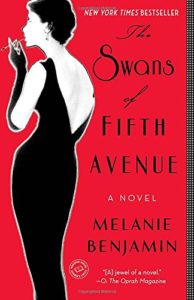 This scandalous, riveting novel about the “New York’s Swans of the 1950’s and the scandalous headline-making, and enthralling friendship between literary legend Truman Capote and socialite Babe Paley.
This scandalous, riveting novel about the “New York’s Swans of the 1950’s and the scandalous headline-making, and enthralling friendship between literary legend Truman Capote and socialite Babe Paley.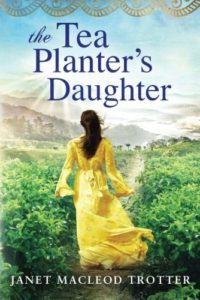 Set in ’20s Ceylon, a young Englishwoman marries a charming tea plantation and widower, only to discover he’s keeping terrible secrets about his past, including what happened to his first wife, that lead to devastating consequences.
Set in ’20s Ceylon, a young Englishwoman marries a charming tea plantation and widower, only to discover he’s keeping terrible secrets about his past, including what happened to his first wife, that lead to devastating consequences.